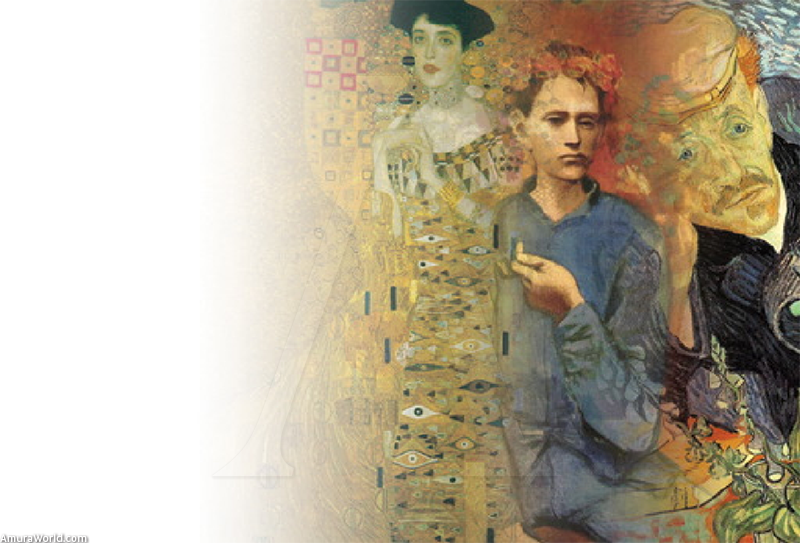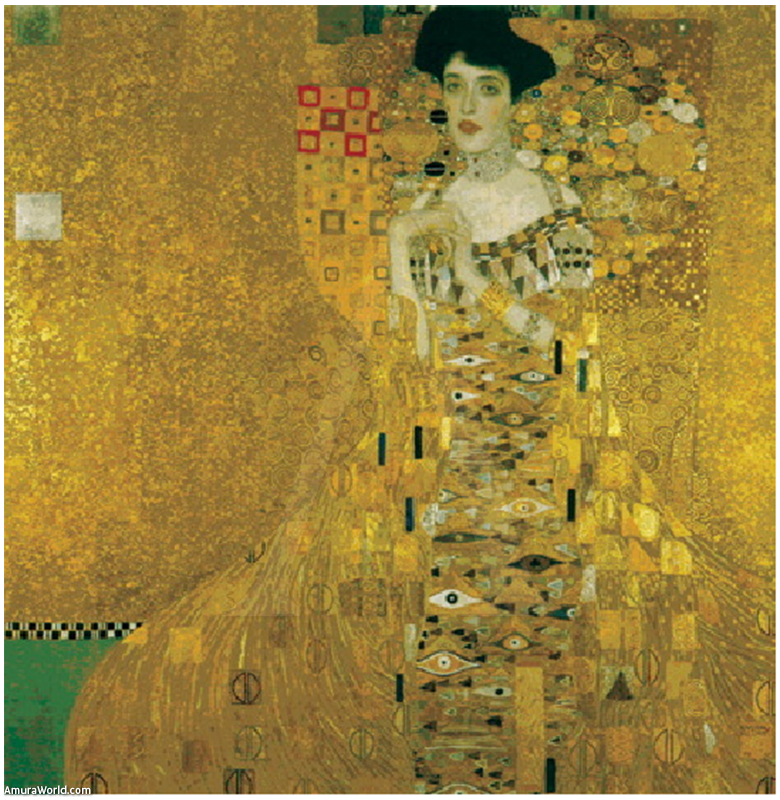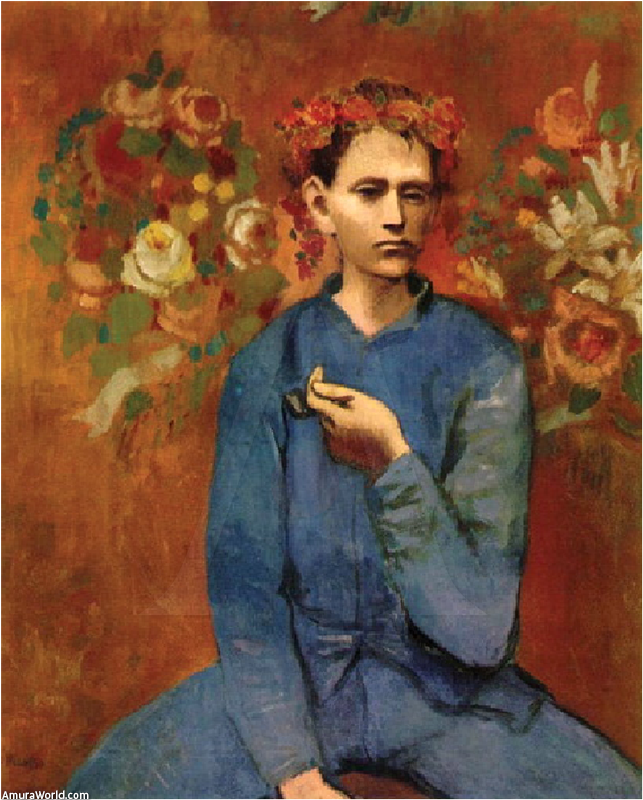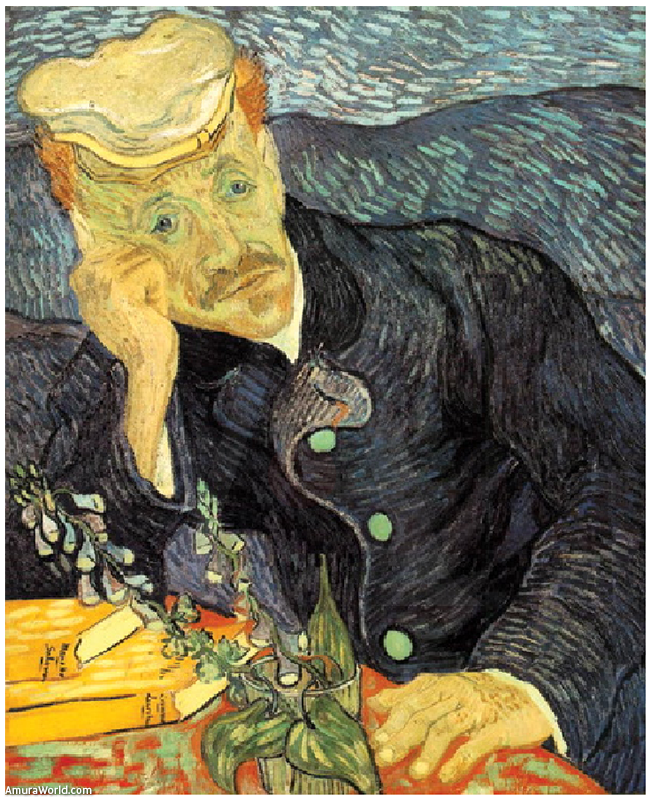When I was gathering data for writing this article, the references were pretty stable. The prices reached at auction were rising in a regular way but it was hard to surpass the record established two years ago, when a painting by Picasso was sold for 104 million dollars, putting it at the head of the list. Before finalizing the definite order and after checking different sources, everything became incongruous.
Last June a painting by the Austrian artist Gustav Klimt was sold for the incredible amount of 135 million dollars and this amazing event did not even occur under the effects of the typical fever that raises the temperature during an auction since it was a sale among private individuals. Ronald S. Lauder, the cosmetics magnate and son of the legendary Esteé Lauder, bought it from the niece of the woman portrayed in the painting.
It is, of course, a painting with a history and of it and its author we will speak later on as we will about the Spanish artist Picasso and the Dutch painter Vincent van Gogh, the two other sides of the triangle that is formed by the artists whose work monopolizes the head of the list of the world’s ten most expensive paintings. We have, as well as Klimt’s painting, three by Picasso and the same number by Van Gogh while Renoir, Rubens and Cezanne occupy the remaining positions.
Gustav Klimt
(1862-1918)
The portrait of Adele Bloch-Bauer 1 (there is another of the same woman) will be shown at the Neue Gallery in New York, a small museum founded by Lauder five years ago and dedicated to German art of the 20th century. It will hang next to another masterwork of the artist. The Kiss, most probably the most famous painting done by the Austrian artist Gustav Klimt (1862-1918). The painting was done in 1907 and was commissioned by the millionaire Ferdinand Bloch-Bauer, husband of the portrayed, who owned, in his collection, four other paintings by the artist. Adele, the model, died in 1925 and, since none of her children survived her, left a will in which she stated that she wished to leave the paintings to her country. However, in 1938 and after the Nazi annexation of Austria, Ferdinand escaped from the incipient genocide to Switzerland determined to revoke the will in order to leave his fortune and his art collection to his nieces and nephew: Louise, Maria and Robert. It was too late since the paintings had been requisitioned because the Nazi army.
At the end of World War II the family tried to recuperate its possessions and, though several pieces were promptly returned they refused to deliver the Klimts. In 2000 they began a legal battle and after four years of litigation the Supreme Court of the United States accepted the denunciation against the Austrian government. This established a unique precedent since, in January of this year the Austrian Tribunal of Arbitration favored the family and the five paintings were retuned to their original owners.
It took him three years to paint the portrait of Adele Bloch-Bauer, a woman who had received a careful education, was a regular in Viennese cultural circles and a convinced patron. Some versions say that maybe they were lovers, one of the many that paraded by his bed and his paintings but that is not important. What is vital is that the commission permitted the artist to demonstrate his characteristic style, a pure modernism where line and what is decorative are combined. Called art nouveau in France and jugendstl in Germany, it blends with a nascent symbolism that came from Gauguin and the Postimpressionists. The painting joins a small, even affected, part, barely a face, neck and hands; with a sumptuous, practically abstract, design, rich in textures and sheens that give the painting the aspect of a marvelous jewel, a unique being filled with expression and valor.
Pablo Picasso (1881-1973) had definitely moved to Paris in 1904. This is the end of his melancholic blue period, which was followed by his pink period and between these two is where this painting is placed. Abandoned people and circus scenes will be his motifs before the 180-degree change that was Cubism and its historic vanguard. In the first years of the 20th century, Picasso emerges as a renovated, hyperactive, nonconformist artist possessed by his genius and personality; a great lover, an artists that embodied, for the great public, the vanguard painter obsessed by evolution and originality and by always going further than what is foreseen. Daniel Henry Kahnweiler, an art dealer and one of the first to show his art, had no doubts: “In art this man reigns our era. Our century is the century of Pablo Picasso. It is true that in our era there have been other great painters and sculptors but he, more than any other, has been the one that has opened a path”.
Of course, Picasso was always able to make a living with his art and, from the 50s, lived comfortably and without making any concessions either in his themes or pacifist, libertarian ideas. He always worked risking himself to the maximum, trying to take from the creative experience a vivid experience and vice versa. This enormous creative passion can be seen in his paintings and this is, most probably, why his artwork continues to be important and it still relevant in our days. He changed styles like he did his shirt but in each of his periods he is recognizable, in fact unmistakable, and always put forward new challenges: “You expect me to tell you what art is. If I knew it I would not tell anyone.” In the period he painted Boy with Pipe Picasso was still unknown. After four years of using the color blue as a form of demonstrating that they were paintings before they were representations of something in particular, as a form of distancing oneself of what is real, he returns to color and the red of the background seems to anticipate future searches. Cubism with its different forms will appear afterward and, later, his ample trajectory as the free and only member of his own movement. “For me, art has no past or future. When a work of art cannot remain permanently alive then it does not merit the least consideration”.
Vincent van Gogh
(1853-1890)
Vincent van Gogh (1853-1890) only painted during the last ten years of his life and the painting that we are mentioning is from those months, in 1890, in which mental illness finally led him to suicide, when he shot himself in the chest after finishing his last painting, an agitated view of Auvers over which crows are flying. This painting was done a few days before and is a portrait of Paul Gachet, general practitioner of the small town where Vincent spent his last days. Different than Klimt, Van Gogh never new success or recognition and barely sold a painting in all his life. His brother Theo, his eternal conscience and support, installed the artist in an inn under the supervision of Dr. Gachet, a great aficionado of the most renovating art of the moment, confident that the peace of the countryside would better Vincent’s state of mind.
In this short last decade of his life he produced thousands of works of art, among them four hundred paintings, but he was never appreciated or even understood by the most advanced artists of his time. How was poor Vincent to think that, a century later, three of his paintings would be among the ten most costly of the world? Antonin Artaud, another marvelous madman, said, “One day the paintings of Van Gogh, armed with fervor and good health, with return to throw into the wind the dust of a caged world that his heart could not stand”. In a letter to his brother Theo, Vincent wrote that, in this painting, he wanted to give Dr. Gachet “the sad expression of our time”. Depression takes over, he feels he is a burden on everyone, a good-for-nothing whose efforts lead nowhere, but not because of that does he stop painting for even an instant. “He could not lose not even a day, or an hour. Others could unhurriedly work on the fabric of their existence. The destiny of Van Gogh was to ignite himself in his own ardor, to consume himself burning. There are paintings of his, works of a concentration without equal, which were painted in one day; violently, but not lightly, since his unrestrained passion was not satisfied until he found the perfect expression. The definite one” (Paul Westheim in Mundo y vida de grandes artistas/World and Life of Great Artists).
To conclude, we will say that this article is more an x-ray of the art market of our times than a speculative manual of reference. There are, of course, more expensive works of art than those mentioned but they are not for sale.
Text: Josu Iturbide ± Photo: IMGRES AH




